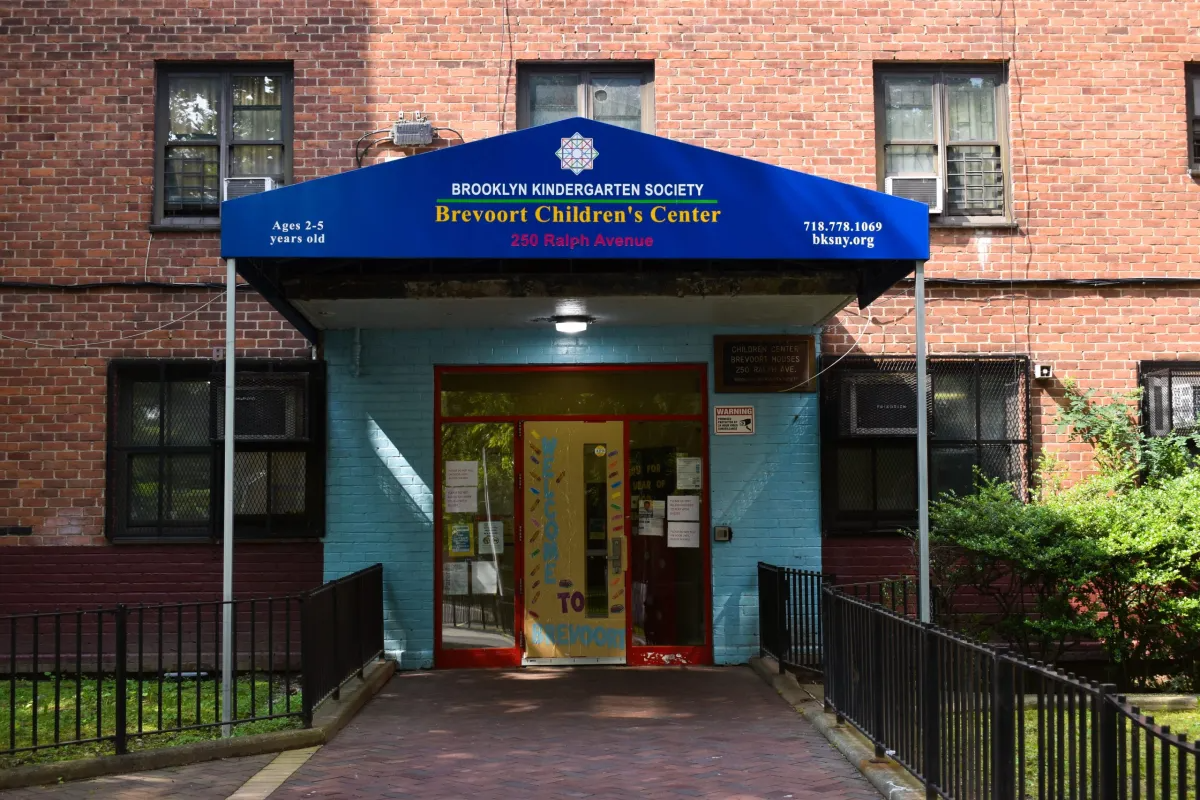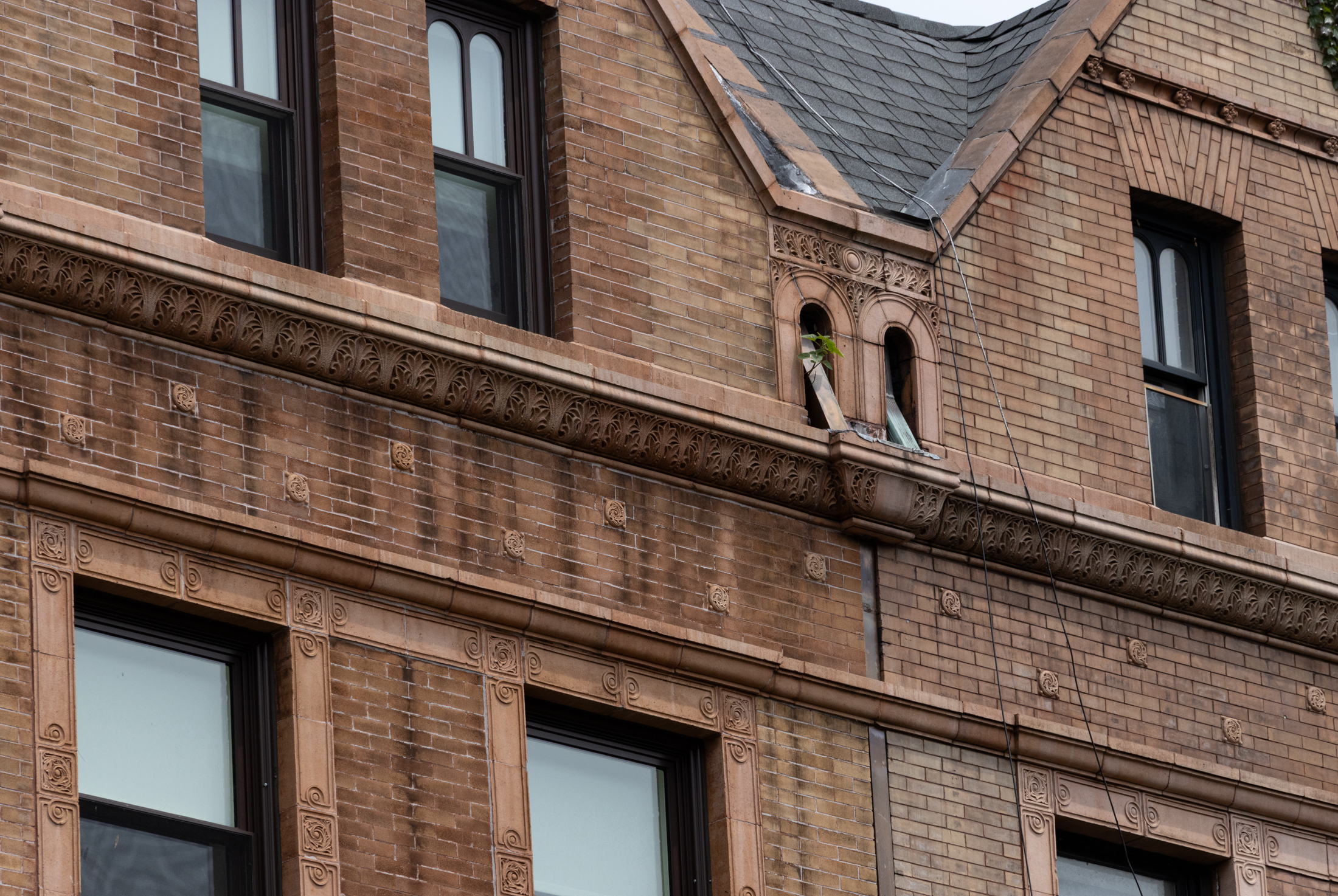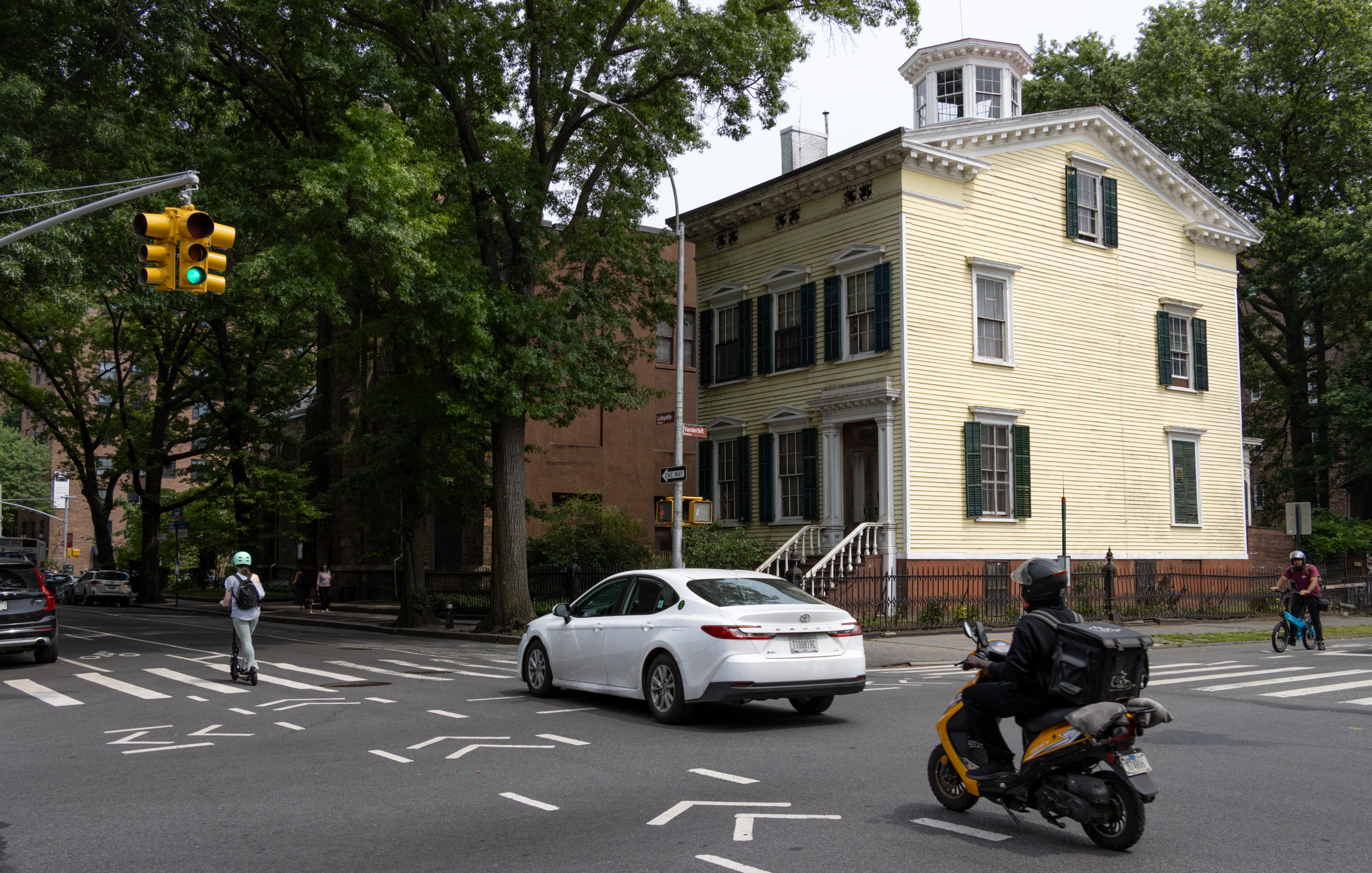Walkabout: The Fight for Freedom, Part 3
Read Part 1, Part 2 and Part 4 of this story. David Ruggles and the Tappan brothers, Lewis and Arthur, were three men with Brooklyn connections who were devoted to the cause of abolition in the 1830s. Massachusetts-born Lewis Tappan and his family lived in Brooklyn Heights, on Pierrepont Street. He and his brother founded…

Political cartoon featuring Isaac Hopper, David Ruggles and Barney Corse. Photo via Wikipedia
Read Part 1, Part 2 and Part 4 of this story.
David Ruggles and the Tappan brothers, Lewis and Arthur, were three men with Brooklyn connections who were devoted to the cause of abolition in the 1830s. Massachusetts-born Lewis Tappan and his family lived in Brooklyn Heights, on Pierrepont Street. He and his brother founded the company that would become Dun and Bradstreet, and were among the wealthiest of New Yorkers. Unlike some of their contemporaries, who were making good money from supporting Southern plantation life, the Tappan brothers hated slavery with a passion that caused them to donate a lot of money to abolitionist causes and to organizations that promoted education and advancements to the black community. Lewis Tappan had moved to Brooklyn when his integrated chapel in Manhattan was set upon by a mob, which destroyed the chapel and his adjoining home. More details of the Tappan story can be found in Part One of this series.
One of causes that the Tappan’s supported was the New York Committee of Vigilance, co-organized by a studious looking black man named David Ruggles. He was one of the most important abolitionists in New York’s fight against slavery, a man who didn’t believe in waiting around for freedom to be granted to the South’s enslaved black population. It’s a travesty that David Ruggles’ name and career is not better known, he should be a household name like Frederick Douglass, Harriet Tubman and the Rev. Henry Ward Beecher.
As noted in Part Two of this story, Ruggles was a highly intelligent man with many “firsts” to his name. He was the first black man to open a bookstore in New York City, and the first to have it be a lending library for black people. He was also the first black publisher in New York, as the writer, editor and publisher of a magazine called the Mirror of Liberty. He wrote for the Freedman’s Journal, the first black newspaper in America, and was also a writer and distributer of The Liberator and The Emancipator, two important abolitionist newspapers.
Like his white counterparts, the Tappan brothers and William Lloyd Garrison, David Ruggles was an “immediatist,” he wanted slavery gone now, not phased out over time. His was a form of resistance called “practical abolition,” where the case to be made against slavery was to be fought in the streets and then the courts, as he and his Committee of Vigilance sought to deter slave catchers in the streets of the city, as well as Southern slaveholders who dared bring their slaves with them when they journeyed to New York City.
Although black people in New York were all free by the 1830s, they were not safe. Freelance slave catchers were flooding the streets of Manhattan and Brooklyn looking for escaped slaves. Because fugitive slaves were legally property in the South, the slave catchers had a legal right to apprehend, imprison and return men, women and children who had escaped North. This was fifteen years before the passage of the Fugitive Slave Act of 1850. In the mid-1830s, the law was not as clear, but few members of New York’s law enforcement community, or the courts really cared about the rights of blacks; free, fugitive or otherwise.
Slave catchers would occasionally find their prey, but very often, they would grab anyone who generally fit the description, including people who were never slaves in their live times, have them imprisoned, signed off on by the courts, and on a waiting ship to the South in a matter of days. The captive had no legal right to offer evidence, identify or defend himself in any way, and was not even allowed to speak on his or her own behalf. Unless a legal advocate in the form of a white lawyer or benefactor was found quickly, they would be on a plantation within a week. This was what the Committee of Vigilance was there for – to find out about these kidnappings, and get legal defense and money in place, before it was too late. The Committee saved as many as they could, but not all.
While dealing with the slave catchers was a major part of their work, the Committee also dealt with Southerners who came north with their slaves. As far as the abolitionists were concerned, any slave setting foot in a free state was himself free. Whenever they could, they would approach enslaved servants, in the presence of their masters or not, and inform them of opportunities to freedom. If the servant subsequently escaped, they would help that person to freedom. As one can imagine, that did not go well with the slave owners at all. This was usually quite uncomplicated, but one case involving a slave owner named John P. Darg, of Virginia, and his slave Thomas Hughes, would catapult David Ruggles and his Committee of Vigilance into the headlines.
New York State did not like Southerners bringing their slaves into the state with them, and by the 1830s, was trying to figure out negotiations with Virginia and other southern states as to how it wanted to handle that. In the meantime, Southerners continued to visit the city, bringing their servants with them. John P. Darg was a Virginia planter who came with his manservant Thomas Hughes to New York on business, in August of 1838.
David Ruggles was working with two white abolitionists named Barney Corse and Isaac T. Hopper. Corse was also a member of the Manumission Society, which had been co-founded by the Tappan brothers, and had been helping fugitives and members of New York’s black population for over ten years, especially in cases of kidnapping and fugitive slave trials. Isaac T. Hopper was a Quaker abolitionist, an elderly statesman who had been a vocal and active abolitionist since the 1790s. Along with the black man and the angry firebrand abolitionist, Hopper was the elder statesman, the voice of reason and reasonableness.
The Committee knew Darg was in the city, and had approached Hughes about his freedom. A couple of nights later, Thomas Hughes appeared at Isaac Hopper’s door seeking refuge. Something didn’t feel right to Hopper, and he asked Hughes to leave. The next day, the NY Sun, a daily tabloid, printed a large notice, offering a reward for the return of Hughes, who had not only escaped, but took off with the seven or eight thousand dollars Dard had with him. In today’s money, that would have been at least $152,000, probably more.
The trio worked as go-betweens between Dard and his former slave, Hughes. The abolitionists agreed that turning over the money back to Dard was a moral act, but turning Hughes over was not. They negotiated with Darg to get his money back, but let go of Hughes. The planter agreed. Unfortunately, Thomas Hughes no longer had all the money. He had given some of it to some of the other people who were helping him escape, and had managed to lose a fair bit of it in some of New York’s seedier gambling halls. When they returned the balance, Dard was furious, and called for the arrest of Corse and Ruggles, for grand larceny. Corse had bail money, but Ruggles did not, and ended up spending two days in lockup with common criminals, without even being charged with anything.
The case captured the public attention, and not in a good way, for months. Cartoon caricatures pictured Ruggles, Corse and Hopper as a trio of extortionists, taking money from honest planters and preying on unwitting slaveholders. In the end, all three were exonerated, but the struggle had taken its toll on David Ruggles. He had never been in the greatest of health, and had put all of his time and money into the Cause. He was homeless, penniless and going blind at the age of 28.
Three months after the Dard Case, a grateful black community awarded Ruggles with a cane with a gold knob. It was an appreciated gesture, and one can only hope he didn’t have to sell the cane in order to survive. His in-your-face activism was putting him at odds with many in the abolitionist movement, who saw him as too radical and confrontational. They wanted to end slavery, but with moral suasion, not controversy. In the meantime, Ruggles had begun writing for the Colored American, a re-launch of the Freedman’s Journal, published by Samuel Eli Cornish, and all was well until 1839.
That year, Ruggles had heard that a black hotelier named John Russell was holding black fugitives captive before they were send back South. He wrote a scathing accusation in the paper, and had it inserted without Cornish’s permission. Russell was furious and sued the paper, Cornish and Ruggles for libel, and won a judgment for $600.00, which almost bankrupted the paper. Cornish was livid, and went after Ruggles in print.
Wealthy benefactors paid the judgment, but Cornish was able to badmouth Ruggles enough to have an examination made of the Committee of Vigilance’s books. A shortage of $400 was found, and Ruggles was accused of taking it. Ruggles struggled to clear his name with an impassioned piece called “A Plea for a Man and a Brother,” but it was to no avail. He had to resign from the Committee and leave the New York abolitionist movement. His health was worsening, and if he didn’t get better soon, he would soon be dead, anyway.
Next time: David Ruggles’ story is not yet done. The conclusion of this important man’s life, next Walkabout.
David Ruggles, the Tappan brothers, and many of Brooklyn’s known and unknown valiant anti-slavery warriors are part of a ground breaking project called In Pursuit of Freedom: Anti-Slavery Activism and the Culture of Abolitionism in Antebellum Brooklyn. The project was a joint effort of the Brooklyn Historical Society, the Weeksville Heritage Center and the Irondale Theater Ensemble, and represents years of research and investigation into this little known area of American History. There’s a website connected to the project, as well as exhibits and a theatrical production.
Read Part 1, Part 2 and Part 4 of this story.





What's Your Take? Leave a Comment